Kindling the Spark: How the Portrait of a Graduate Becomes the Catalyst for Transformation
Key Points
-
Incorporating diverse community and student voices in developing a Portrait of a Graduate ensures it reflects local values and needs, fostering a collective vision and student agency.
-
Successful implementation of a Portrait of a Graduate requires teacher buy-in and support through professional learning and accessible resources, enabling them to bring the vision to life in the classroom.

America’s education system was a groundbreaking effort to help a growing nation thrive in the 19th century. Now, 200 years later, the world has changed; the horizon looks drastically different. Collectively, we need to redesign our education system to enable all of our children — and, by extension, our nation — to thrive today and tomorrow. “Horizon Three” or “H3” names the future-ready system we need, one that is grounded in equity serving learners’ individual strengths and needs as well as the common good. This series provides a glimpse of where H3 is already being designed and built. It also includes provocations about how we might fundamentally reimagine learning for the future ahead. You can learn more about the horizons framing here.
By Mike Duncan
It is often said that every system is uniquely designed to get the results it gets. The American education system, as it stands today, is designed to produce students who can digest knowledge and apply those facts to a series of tests — standardized and normed so we can compare manufactured apples to manufactured apples.
It’s no surprise that students struggle to find meaning in this forced march through a curriculum that holds no special value to them. Is it possible that the decades-old system designed to improve success for all students unintentionally engineered joy and value out of the process, ignoring the very thing that makes us human – curiosity, exploration, and discovery?
Courageous education leaders across the country have responded. Hundreds of school districts have adopted a Portrait of a Graduate, many of them with help from Battelle for Kids (BFK), that define the durable skills – such as critical thinking, communication, and creativity – that students need as they matriculate through the education system and become productive adults.
As Antonia Rudenstine highlighted in another post in this series, we’re headed into a VUCA world (volatile, uncertain, complex, and abstract) and it’s important that we do the work to think about what skills and capabilities our young people need. These durable skills, combined with evolving requisite knowledge and literacies,, are critical for helping students find success in what’s next.
We often see well-meaning educators and districts point to their Portrait of a Graduate as the destination. It’s certainly a checkpoint on the journey to system transformation, but it’s not the end goal.
Instead, the Portrait of a Graduate is a catalyst for change.
As a former superintendent, adopting a Portrait of a Graduate in my district shifted my focus from test scores to infusing education with meaning and joy, emphasizing real-world applications and fostering student agency.
How do you take a Portrait of a Graduate and kindle the spark of this type of change?
Here are three ideas to create the conditions for success based on Battelle for Kids’ extensive work with districts over the past decade.
Ask the Students
The Portrait of a Graduate is locally developed and reflects the values of the community the school district serves. To accomplish this, the Portrait of a Graduate should be informed by diverse and representative community voices to create a collective, unifying vision. The Portrait can never be completed in isolation without these community voices.
Perhaps the most important voice to include is that of the students. They are the stakeholders who will be impacted the most but oftentimes are called upon the least for input. This not only empowers students by building their agency but also demonstrates to other students the impact of their voice. This is a great opportunity to model community design processes to both include young people and teach them valuable skills and mindsets.
Battelle for Kids worked with Vineland Public Schools in New Jersey to develop their Portrait of a Graduate. In addition to its community design team, Vineland tapped two teams of students to meet directly with BFK’s Jessica Harding, who was facilitating the design process for the district.
“The students had such a rich conversation and added so much to the process,” said Harding. “I always encourage superintendents and school leaders who are leading a project, ‘Listen to the students.’ We are creating this Portrait of a Graduate – what they want should be considered. The kids really do know what they want.”
Leaders in the Moline-Coal Valley School District in Illinois took it a step further. When they were ready to develop a Portrait of an Educator, in alignment with their Portrait of a Graduate, they tapped the people who they believed knew best what to look for in educators – the students.
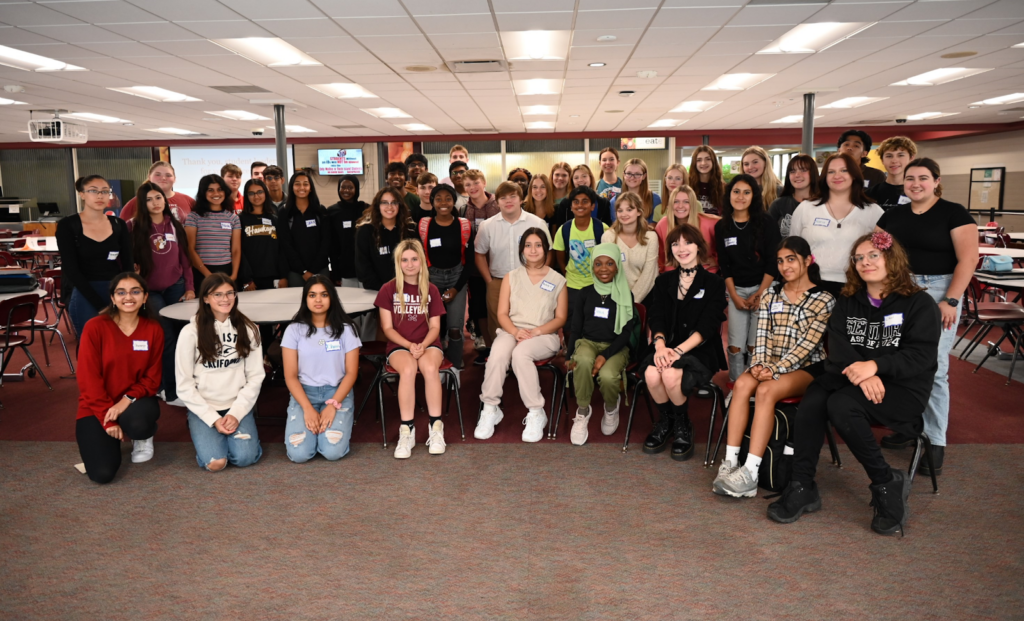
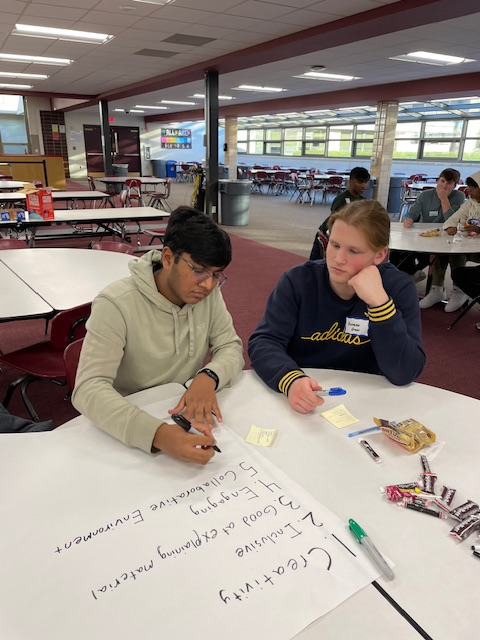
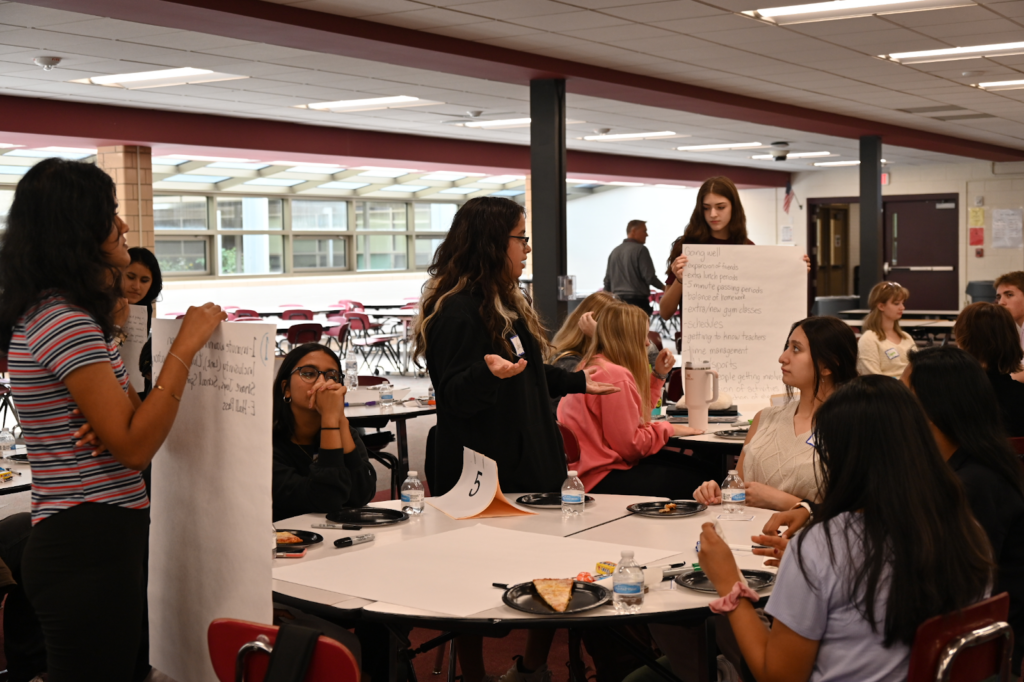
Over the course of a school year, more than 60 Moline-Coal Valley students took part in a Superintendent-Student Advisory Council. The student-led group was solely responsible for identifying six competencies and accompanying descriptions that comprise the district’s Portrait of an Educator.
“Nothing about them without them! It is this mindset that inspired our Portrait of a Moline-Coal Valley Educator,” said Superintendent of Schools Rachel Savage, Ed.D. “The student-led and completely student-generated list of core competencies captures the voice of our most important customers, our students.”
As created by students, the competencies in the Moline-Coal Valley Portrait of an Educator include:
- Understands Students’ Lives
- Is Upbeat, Positive, and Relatable
- Communicates Effectively
- Is Confident, Competent, and Prepared
- Is Timely and Fair
- Is Passionate and Creative
“To achieve our desired results, it is essential to engage students and provide a platform for them to take an active role in their own learning,” added Savage. “This new tool will help ensure we are hiring the type of educators that our students can depend on to help them reach their fullest potential.”
The students also informed the development of a logo – featuring the likeness of a superhero, no less – to represent how they see educators and how they feel educators want to be seen by students.
If it’s not obvious by now, the kids really do know what they want.
Make it Easy for Teachers
Like any successful initiative in education, teacher buy-in is crucial. These are the people who will bring the Portrait of a Graduate to life in the classroom. How do we make this easy for teachers – especially for those who may be reluctant to embrace change?
In Louisa County Public Schools (LCPS) in Virginia, they built momentum around their Portrait of a Graduate through impactful and relevant professional learning.
LCPS knew it needed to turbocharge its efforts to spread and scale the 5 C’s – Citizenship, Collaboration, Communication, Creativity, and Critical Thinking – in its Portrait of a Graduate.
To accomplish this, LCPS invested in professional learning with the creation of “Launch,” an ambitious district-wide professional development conference that had the feel of a national event. The conference offered more than 80 different sessions focused on the 5 C’s to spark inspiration in teachers.


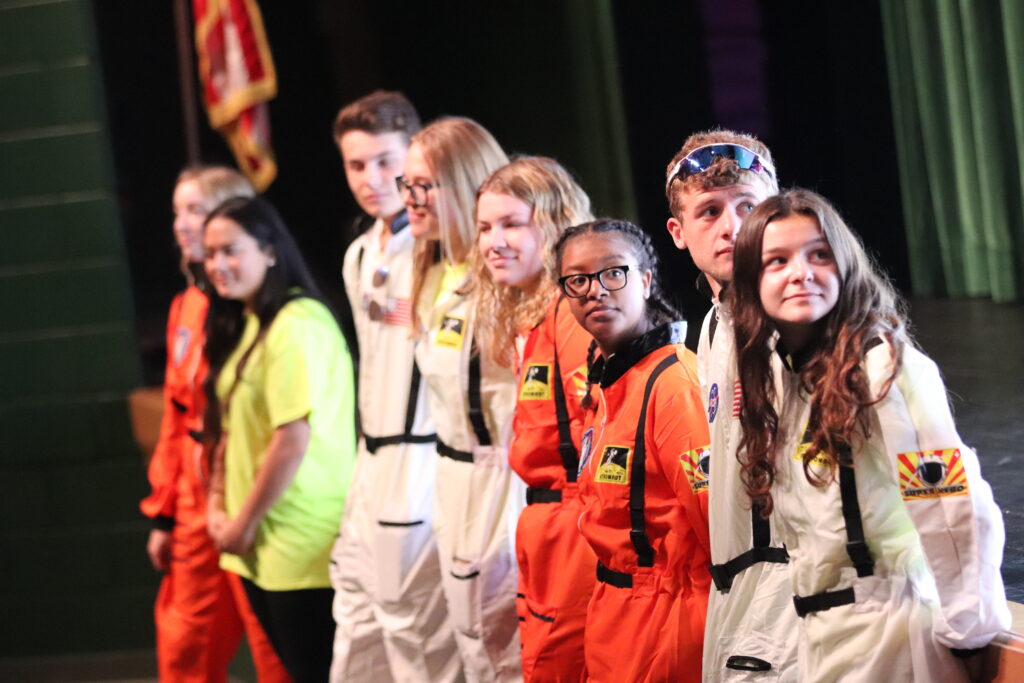
“This was not a one-size-fits-all type of event. We prioritized voice and choice,” said Justin Grigg, Assistant Superintendent of Instruction. “Teachers chose what sessions they attended and then brought those insights back to their classrooms.”
Many districts have also accelerated success by creating tools and resources for teachers, including grade-level rubrics, “I Can” statements, and sample performance tasks.
The North Carolina Department of Public Instruction (NCDPI) is perhaps the best example of this strategy of empowering educators. NCDPI worked with Battelle for Kids to develop a comprehensive set of resources to help schools and teachers successfully implement the North Carolina Portrait of a Graduate.
Educators from across the state were involved in the design of these resources, collaborating to create classroom-ready materials and field-tested performance tasks. NCDPI published the resources on its website for easy access and continues to support educators with professional learning.
“What is so exciting about these performance tasks is that they were created by teachers for teachers! They are student-tested, standards-aligned, and ready to be used across the state,” said Catherine Truitt, State Superintendent of Public Instruction. “Infusing hands-on learning and career exposure into everyday lessons will increase student engagement and show them the real-world relevance of their education.”
Meet Your Community Where They Are
Sometimes we see initiatives fail because we don’t take into account the diverse needs of the community we serve. There are barriers to access and inclusion that can derail good intentions if we’re not mindful.
When Columbus City Schools (CCS) in Ohio was ready to launch its Portrait of a Graduate, it was important that all stakeholders were able to easily access and understand the attributes and what they meant for students. In a district where more than 100 different languages are spoken in homes, this was not an easy task.
Part of the launch efforts included printing materials for families in various languages beyond just English. Wanting to scale the accessibility even further, CCS created Portrait of a Graduate posters in multiple languages so students walking the halls could read them in their family’s native language.
“This work is a testament to our belief in an inclusive education that uplifts every student, regardless of their background,” said Superintendent Angela Chapman. “It’s about empowerment, equity, and fostering a future where every learner will thrive.”
CCS also considered its youngest learners, “translating” the Portrait of a Graduate descriptions into simpler terms that elementary students could more readily comprehend. The district used these descriptors on “kid-friendly” posters designed as a self-portrait for students to see themselves within.
Similarly, Hardin Public Schools in Montana honored the cultural input and history of the community it serves when the district launched its Portrait of a Graduate in two languages – English and Apsáalooke. Hardin serves the Crow Reservation in southern Montana, and 90% of its students are Native American.
“We chose to create a version that incorporates the Apsáalooke word for each of our core competencies as a way to respect the cultural background of the majority of our students and the history of where we live and work,” said Superintendent Tobin Novasio. “We hope this will also help create that sense of belonging we are working toward for our students.”
That’s what this work is all about—creating meaning and a greater sense of belonging and self in students. Horizon Three (H3) of education demands authentic learning experiences that equip students with the knowledge and durable skills necessary for work and life. The Portrait of a Graduate is one catalyst that can spark this change within education systems and alongside the community.
Mike Duncan, Ed.D., joined Battelle for Kids in August 2023 and serves as the organization’s president and CEO. Prior to his role, he was one of Georgia’s longest-serving superintendents, as well as a high-school principal, high-school and middle-school assistant principal, and middle-school teacher.
This blog series is sponsored by LearnerStudio, a non-profit organization accelerating progress towards a future of learning where young people are inspired and prepared to thrive in the Age of AI – as individuals, in careers, in their communities and our democracy.
Curation of this series is led by Sujata Bhatt, founder of Incubate Learning, which is focused on reconnecting humans to their love of learning and creating.


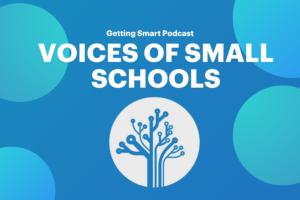



0 Comments
Leave a Comment
Your email address will not be published. All fields are required.